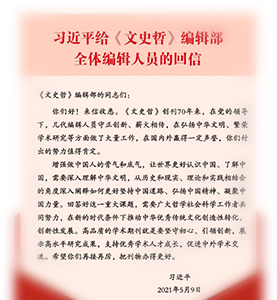论东汉“儒教国教化”的形成
渡边义浩
由于在东汉形成了“儒教国家”,“儒教的国教化”得以完成。“儒教国家”形成的指标应包括四点:1.作为正统思想的儒教体制的形成;2.儒教一尊体制的确立;3.儒教渗透到中央及地方官僚阶层并为他们所接受;4.儒教统治的形成。在为四个指标中,第一个和第四个指标是在章帝时期举行的白虎观会议上确立的;而第二和第三个指标,则是在东汉初期就已经确立的。换言之,东汉时期“儒教国家”的形成可以从章帝时期的白虎观会议上找到答案。“儒教国家”通过重新解释其所依据的经义来适应时代的变化,皇帝由儒教得到其支配正统性,并利用具有儒教教养的文人官僚和与他们同样出身的在地势力来进行统治,这种传统中国固有的国家支配体制,一直延续至道教、佛教隆盛之后。东汉“儒教国家”的支配体制与儒教的关系,是传统中国国家支配的理念基础。
A Study of the Formation of “Confucianism as the Official Religion” in the Eastern Han Dynasty
Yoshihiro Watanabe
Since the “Confucian State” had formed in the Eastern Han Dynasty, the course of Confucianism becoming the official religion was completed. There should be four indicators of the formation of “Confucian China”, i.e. the formation of Confucian system as state orthodoxy; the establishment of Confucianism as dominant system; Confucianism penetrating into central and local bureaucratic stratum, and gaining acceptance; the formation of Confucian rule. In the four indicators, the first and the fourth were established at the White Tiger Conference held in the reign of Emperor Zhang of Han; and the second and third indicators had been established in the early period of the Eastern Han Dynasty. In other words, the answer for the formation of “Confucian state” in the Eastern Han Dynasty could be found from the discussions at the White Tiger Pavilion. The “Confucian state” adapted to the changing times by reinterpreting the classics they were base on. The emperor got his ruling legitimacy through Confucianism, and utilized scholars and officials with Confucianism accomplishment as well as local power with the same background to govern the state. This inherent system of state control in traditional China had lasted till the prevalence of Taoism and Buddhism. The relation between Confucianism and the governing system of “Confucianism State”, is the idea basis for state control in traditional China.


